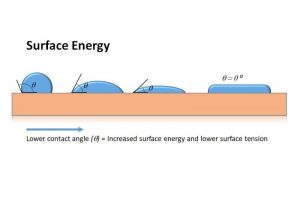Contact Stockwell Elastomerics
Request a quote or get more information.
 Applying adhesives to silicone elastomers can be a challenge on some high performance gaskets. Stockwell Elastomerics has considerable expertise with this process with over 30 years of experience.
Applying adhesives to silicone elastomers can be a challenge on some high performance gaskets. Stockwell Elastomerics has considerable expertise with this process with over 30 years of experience.
Silicone (also known as polysiloxane) is a unique semi-inorganic polymer. Its chemistry is what gives this elastomer some remarkable properties, including resistance to heat, electrical current, moisture, UV light, oxidation, and many other conditions that degrade polymers. Because of its chemistry, it also has very low inter-molecular interaction and surface energy. Surface energy is the measure of how attracted a material’s molecules are to each other and to other materials’ molecules, a property that is very important in bonding materials together with adhesive. In general, the higher the surface energy, the stronger the bond.
Stockwell Elastomerics has proprietary expertise in applying acrylic adhesive onto silicone materials, including silicone foam, silicone sponge, and solid silicone, along with fluorosilicone. This allows engineers to use silicone for its high performance, while also being able to use acrylic adhesive for its relatively long shelf life, high performance, and low cost. Acrylic adhesives tend to provide better performance than silicone adhesives (for temperatures under 350°F), while having the added benefit of being significantly lower cost.
More on the topic of applying acrylic adhesives to silicone, along with information about using silicone adhesives and combination adhesives, can be read in the updated blog post from 2010: Silicone Rubber and Pressure Sensitive Adhesives – Silicone Adhesive, Acrylic Adhesive or Combination Adhesive (3M 9731) – Which is Best?/
Contact Stockwell Elastomerics for further assistance with applying adhesives to silicone elastomers for high performance silicone gaskets.
Request a quote or get more information.
